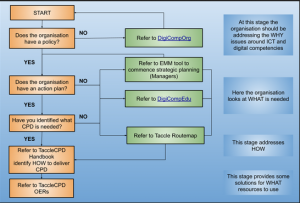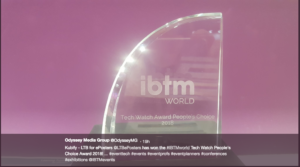Preparing for the ECER 2019 conference – paper, presentation and ePoster
The period before and after the summer holiday is usually characterised by preparation for conferences. For me, the highlight of the conference season is the annual European Conference on Educational Research (ECER), organised by the European Educational Research Association (EERA). The ECER 2019 will take place in Hamburg, so not that much travelling from Bremen. But this conference will be something special, since I will go on retirement in the year 2020. So, the tradition of participating in ECER conferences – that started in 1992 and continued regularly since 1996 – it is coming to an end. But, let us leave the memories to a later date! At the moment I am busy preparing my/our contributions for the conference. So, let us have a look, what is going on!
Conference paper and VETNET proceedings
This year I am contributing with only one submission – a joint paper with Angela Gerrard (Pontydysgu) and my former ITB-colleague Werner Müller (now representing stack.services). The (modified) title of the paper is “Strategies and Training Models for promoting Digital Competences in the field of Vocational Education and Training”. This paper focuses on our work in the ongoing EU-funded project TACCLE 4 CPD. As the acronym tells, it is based on the work of prior TACCLE projects. These have prepared teachers’ aids for creating (digital) content for (web-based) learning environment. The challenge for the current project was to shift the emphasis from direct teacher training to shaping models and patterns for continuing professional development (CPD). And, with this task the project is looking at different educational sectors – including vocational education and training (VET).
The paper gives insights into the development of the TACCLE approach through different projects and changes in working patterns (working with hard copy handbook, shifting to different subject areas and shaping parallel online resources). As a another root project the paper presents the work of the Learning Layers project (co-design of digital tools to support vocational and workplace-based learning). Based on these backgrounds the paper reflects the transition to digital learning culture in the field of VET – including risks, opportunities and hurdles. Taking into account different VET-specific challenges the paper outlines three exemplary ‘Innovation paths’, how to to introduce digital learning culture into vocational curricula and learning arrangements. Then – concerning the promotion of digital competences of teachers and trainers – the paper discusses the European DigCompEdu framework and the local “Theme Room” training model that was developed in the Learning Layers. Altogether, the paper gives a picture, how VET research can contribute to a development-oriented project.
This year – once again – the coordinators of the VETNET network of EERA have invited us to submit out papers before the summer holiday so that they can edit the VETNET proceedings by the conference. This has put us under pressure (to finish the papers before the holiday period) but finally it is rewarding to receive the proceedings by the conference.
Conference presentation and the ePoster
After the summer holiday I have done some other work for the TACCLE 4 CPD project (to be covered in another blog post) and then prepared the conference presentation. This has helped me to take some further steps in the conclusions. However, the major effort was not so much the traditional powerpoint presentation but the ePoster, powered by the Learning Toolbox (LTB).
Last year, before the ECER 2018 in Bolzano/Bozen we had a mini-project of the VETNET network (supported by EERA) to explore the use of ePosters in the VETNET program of ECER. Together with the LTB-developers we arranged that the authors delivered their poster contents via LTB-stacks and used them to present in the VETNET ePoster session. Also, we had a general introductory session for other EERA networks (see my blogs of September 2018). This year we couldn’t continue in the same way but I wanted to keep the idea alive and add new content to the EERA showcase of ePosters. Therefore, I prepared a new stack to present the powerpoint, the full paper and other supporting resources.
This ePoster can be accessed directly via its web link or via the QR-code of the related mini-poster, see below:
So, this is how I have been preparing our contribution to the ECER 2019 together with my co-authors and supported by the LTB-developers. We are looking forward to the conference in Hamburg in a short while.
More blogs to come …















